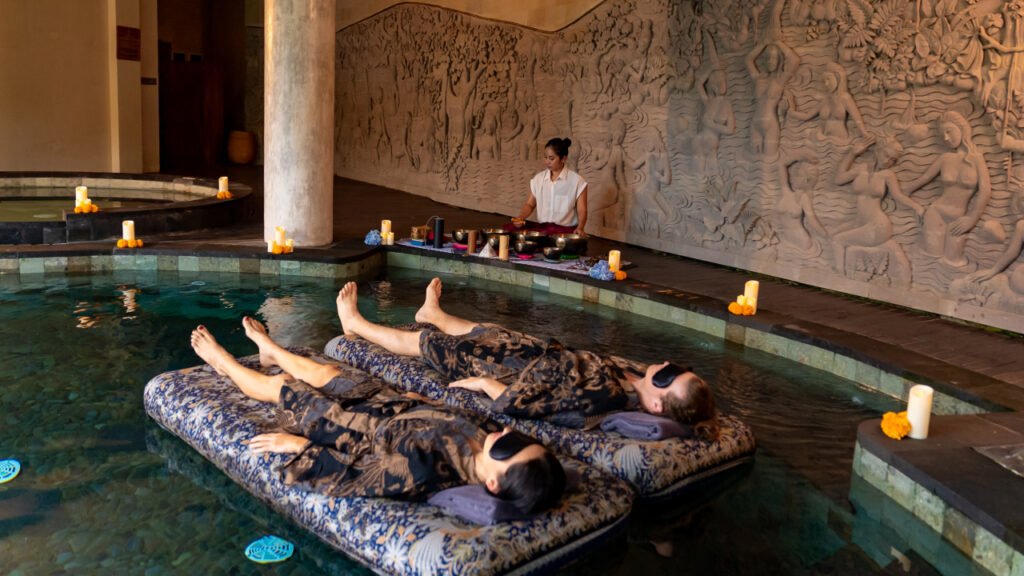
Some people say Bali is the soul of Indonesia. If it is so, then Ubud is its beating heart. Nestled among rice terraces, rivers, and forests, Ubud is home to some of the island’s most sacred and visually stunning temples.
No trip to Ubud is truly complete without experiencing its temples—each one offering a gateway into the spiritual and cultural essence of Bali. Whether you're drawn by the tranquil atmosphere, hoping to witness a traditional ceremony, or simply eager to admire the intricate architecture, Ubud's temples have something meaningful to offer. In this guide, we’ll help you discover which sacred sites deserve a spot on your itinerary.
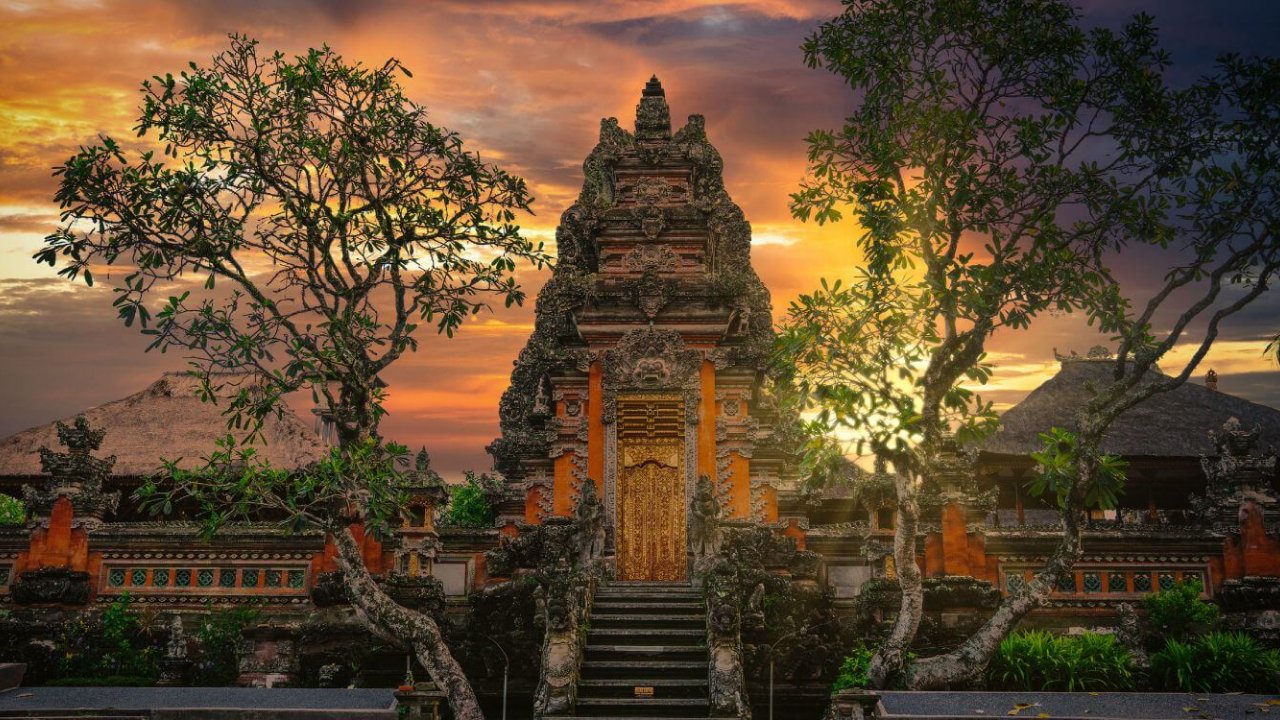
Temples in Ubud are not relics of the past—they're living, breathing cultural hubs. Locals still visit them daily to pray, leave offerings, or join elaborate ceremonies that blend Hindu tradition with Balinese artistry. For visitors, these temples offer a glimpse into something timeless: a way of life that honors balance, nature, and community.
Joining an Ubud temple tour is one of the most enriching ways to explore the island. You'll have the chance to observe purification rituals, witness dance performances under moonlight, or simply sit in quiet reflection surrounded by moss-covered stones. Whether you’re spiritual or just curious, temple-hopping in Ubud reveals the soul of Bali.
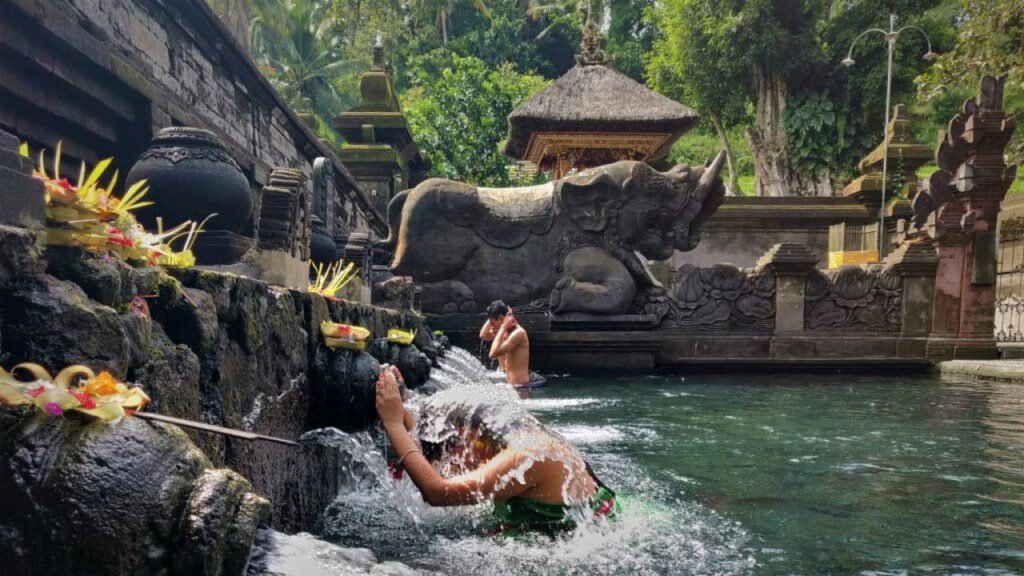
Location: Tampaksiring, Kec. Tampaksiring, Kabupaten Gianyar, Bali
One of the most iconic sacred temples in Bali, Tirta Empul is famous for its crystal-clear purification pools fed by a holy spring. Locals and tourists alike come here to undergo a cleansing ritual known as “melukat.”
The stone-carved spouts, the sound of flowing water, and the scent of incense in the air create a truly moving experience. Until today, this temple remains a meaningful place for inner renewal and spiritual exploration, especially for those looking to immerse in authentic Balinese traditions.
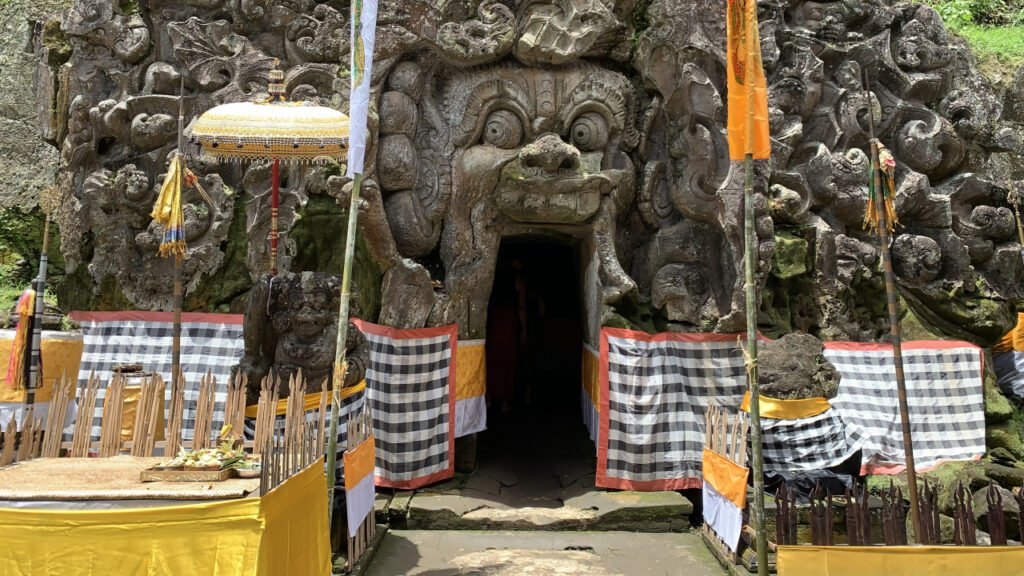
Location: Bedulu, Kec. Blahbatuh, Kabupaten Gianyar, Bali
Step into Bali’s ancient past at Goa Gajah, a 9th-century cave temple carved into a rock face. The entrance—shaped like a demonic mouth—is dramatic and mysterious, while the interior cave holds small stone shrines.
Outside, tranquil gardens and bathing pools reveal its Buddhist and Hindu heritage. It’s an easy stop on any Ubud temple tour, offering a balance of myth, history, and jungle serenity.
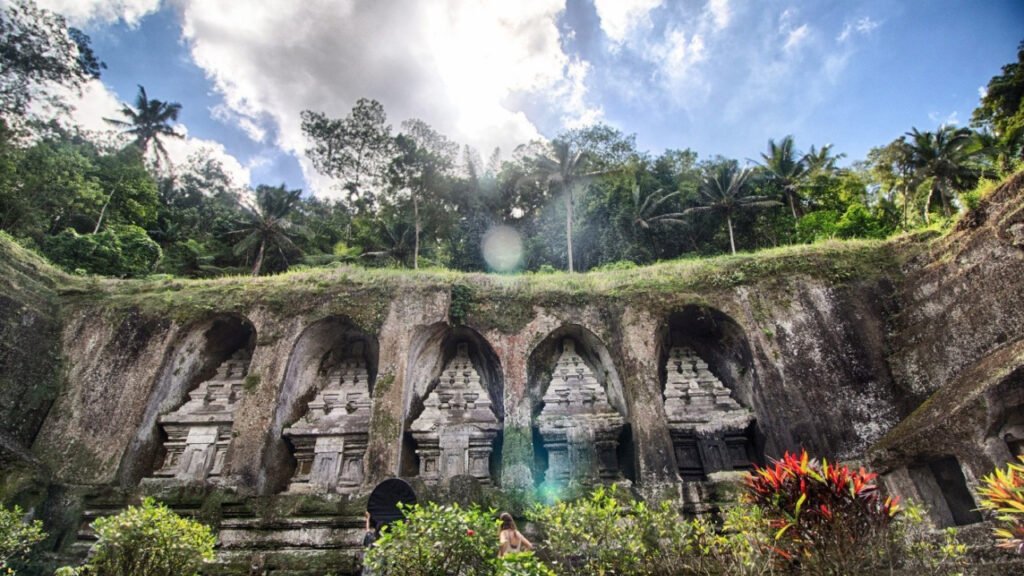
Location: Jl. Gn. Kawi, Tampaksiring, Kec. Tampaksiring, Kabupaten Gianyar, Bali
Hidden in a lush river valley, Gunung Kawi is one of Bali’s oldest and most serene temple complexes. After a scenic descent of 300+ steps through rice terraces, you’ll find ten giant shrines carved into the cliffs. The setting feels almost cinematic—misty, quiet, and sacred. For travelers seeking off-the-beaten-path cultural sites in Ubud, this temple delivers peaceful seclusion and unforgettable views.
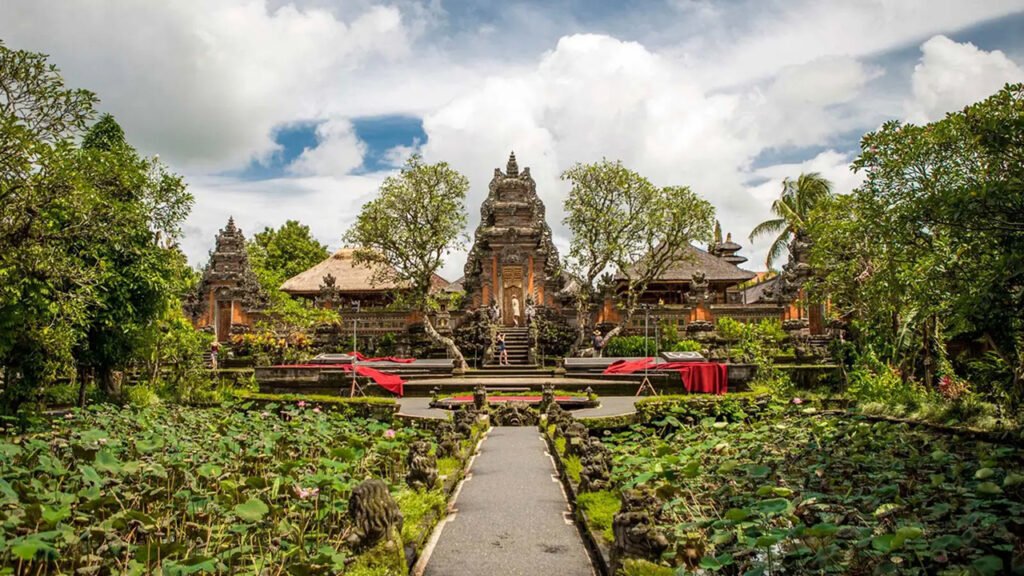
Location: Jl. Kajeng, Ubud, Kecamatan Ubud, Kabupaten Gianyar, Bali
This elegant water temple is dedicated to Saraswati, the goddess of wisdom and arts. Its standout feature is a lotus-filled pond flanked by a dramatic stone walkway, leading to ornate temple gates.
Located just off Ubud’s main street, it’s a perfect blend of accessibility and beauty. Evening traditional dance shows here are a great way to deepen your cultural immersion.
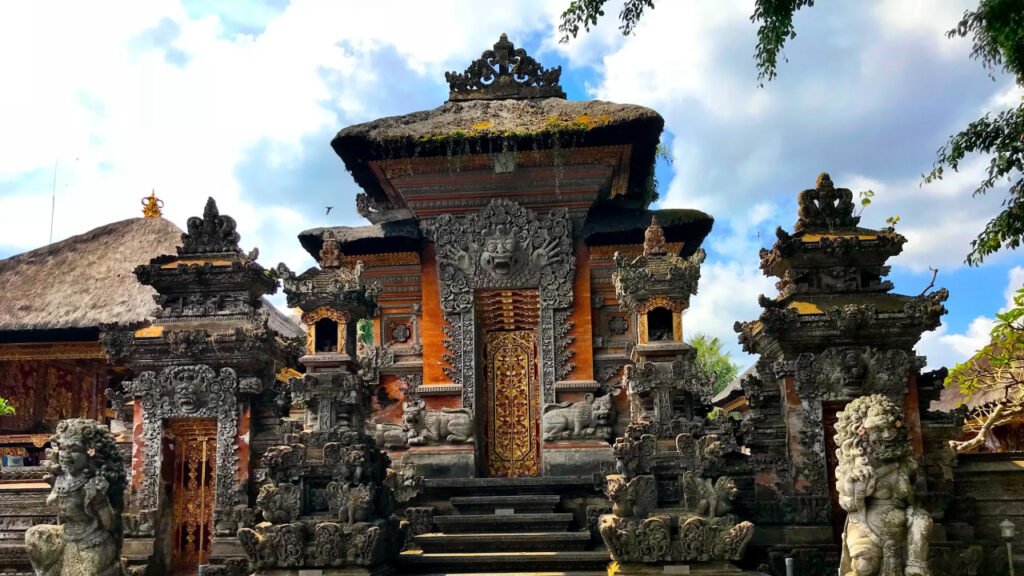
Location: Jl. Raya Ubud, Ubud, Kecamatan Ubud, Kabupaten Gianyar, Bali
Known for its macabre stone carvings and regular Barong dance performances, Pura Dalem is the temple of death and transformation, located right at the center of Ubud. It might sound ominous, but the atmosphere is electric—especially during full moon ceremonies.
The temple’s detailed sculptures and sacred banyan trees create a dramatic backdrop, making it a must-visit for those intrigued by Balinese mysticism.
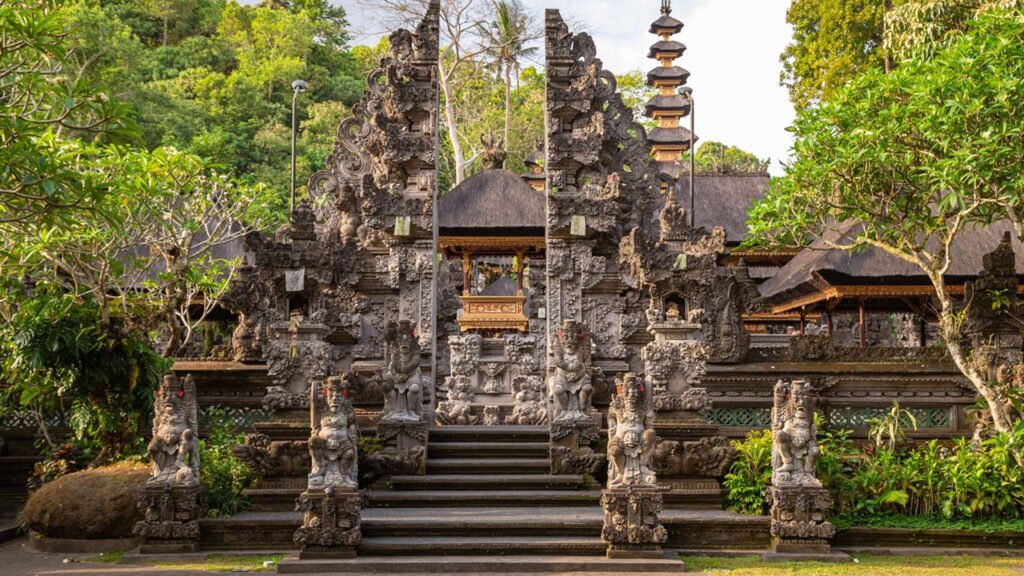
Location: Jl. Raya Ubud No.23, Sayan, Kec. Payangan, Kabupaten Gianyar, Bali
Nestled in a jungle valley where two rivers meet, Pura Gunung Lebah is quiet and deeply spiritual. It’s not as famous as others, but that’s part of its charm.
This temple in Ubud rewards those who wander, offering a space for reflection after a scenic hike. It is one of the most peaceful temples in Ubud—ideal for meditation, nature-lovers, or spiritual seekers looking to avoid the crowds.
To fully enjoy your temple experience, keep these tips in mind: Dress respectfully—sarongs and sashes are a must (don’t worry, most temples offer rentals). Come early to avoid crowds and heat. Pack water, and bring your curiosity—but leave behind any expectations of “must-see” perfection. Temples are living spaces, and each visit is a little different. Be mindful: no entrance is allowed during menstruation, and always ask before taking photos, especially during ceremonies.
To make the most of your time, consider booking an Ubud temple tour. These guided experiences offer local insights and stories that truly bring each site to life. Some tours even combine temples with iconic rice terraces, jungle swings, or hidden waterfalls.
For flexibility, rent a scooter or hire a driver for a DIY temple-hopping day. Just be sure to start early and pace yourself—each temple deserves your full attention.
Finding the best temple in Ubud isn’t about ticking names off a list. It’s about finding places that move you—temples that leave you hushed, awed, or quietly reflective. Each sacred space here offers something unique: the serenity of water, the mystery of caves, the grandeur of stone, or the gentle hum of daily prayer. Whether you seek spiritual insight, cultural connection, or simply the beauty of ancient craftsmanship, the temples of Ubud are waiting, timeless as ever.
So take your time. Listen to the bells. Smell the incense. Let the energy of these ancient spaces guide you. And when you’re ready to return to stillness, consider retreating to somewhere just as peaceful—like Abisena Wellness and Resort Ubud and try their floating sound bath for a deep relaxation experience to restore the harmony of your body and mind.
